Feature
- VISIT YAMAGATA
- Feature
- [Feature] Yamagata Prefecture’s only remote island! Two days on Tobishima
[Feature] Yamagata Prefecture’s only remote island! Two days on Tobishima
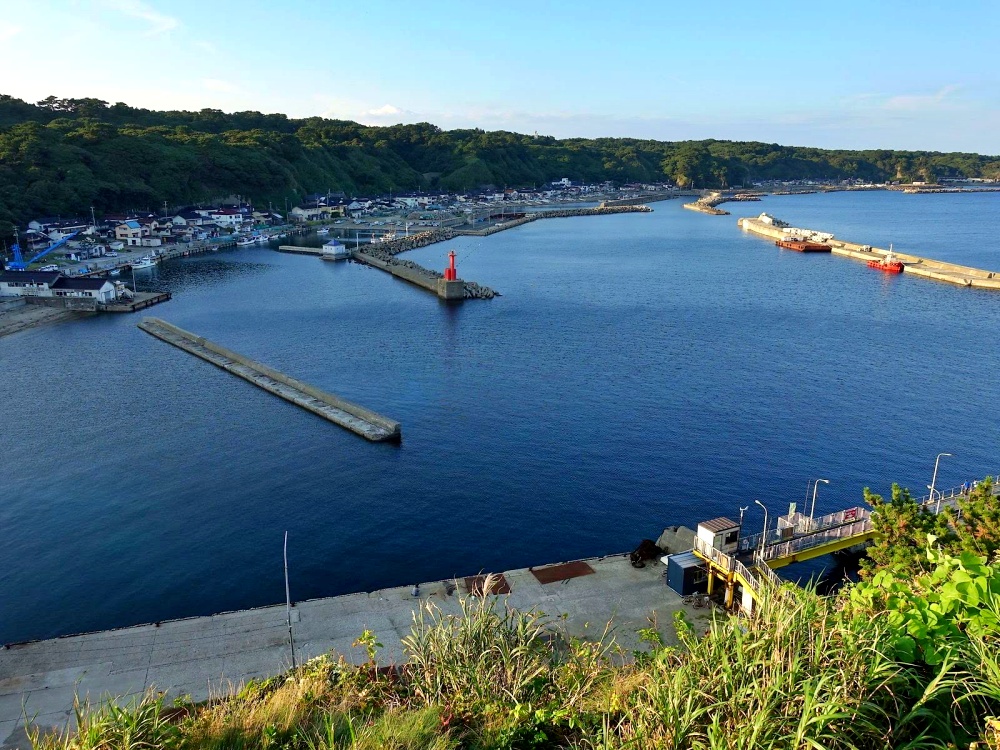
Tobishima is the only remote island in Yamagata Prefecture.
I wanted to go there before but never had the chance to until this trip!
Although it is at the northernmost part of Yamagata prefecture, it is a mysterious island with a southern country feel.
Although it is a town centered on fisheries, I would like to introduce an island exploration where plants that can only be grown on Tobishima, rare migratory birds to visit, tuna flocks, and excitement do not stop.
*This is a report of a trip in September 2019.
1. What is Tobishima?

Tobishima is a small island with a population of about 200, located 39 km northwest of Sakata Port.
Although it is located in the northernmost part of Yamagata Prefecture, the climate is warm and the color of the sea is very beautiful due to the influence of the Tsushima Current.
There are about 270 types of wild birds living here, and you may encounter rare birds that are almost never seen on the mainland.
There are six ryokan and seven guest houses on the island.
There are no taxis, buses, or traffic lights, so you can either walk or cycle.
It may be a little inconvenient, but it is a charming island that is great for adventure.
2. "Tobishima" Ferry

The departure and arrival area of the ferry going to Tobishima is next to the Sakata Seafood Market.
First, buy a ticket.
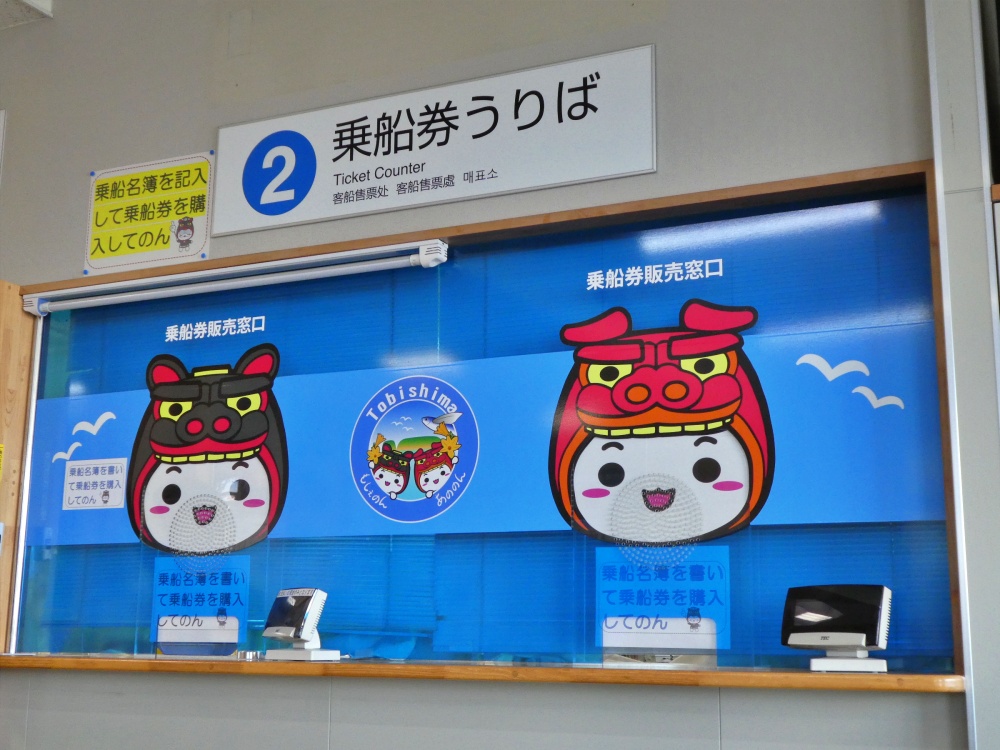

Normally, the ferry named “Tobishima” is operating, but due to maintenance in September, this time I went to Tobishima with the “Sun Liner.”

When you get on a boat, you feel the urge to climb on the deck.
Enjoy the view from the ferry with the sea breeze.
Mt. Chokai seen from the sea is magnificent, and you can see the vast area that spreads from Yamagata to Akita.
3. Arrive at Tobishima
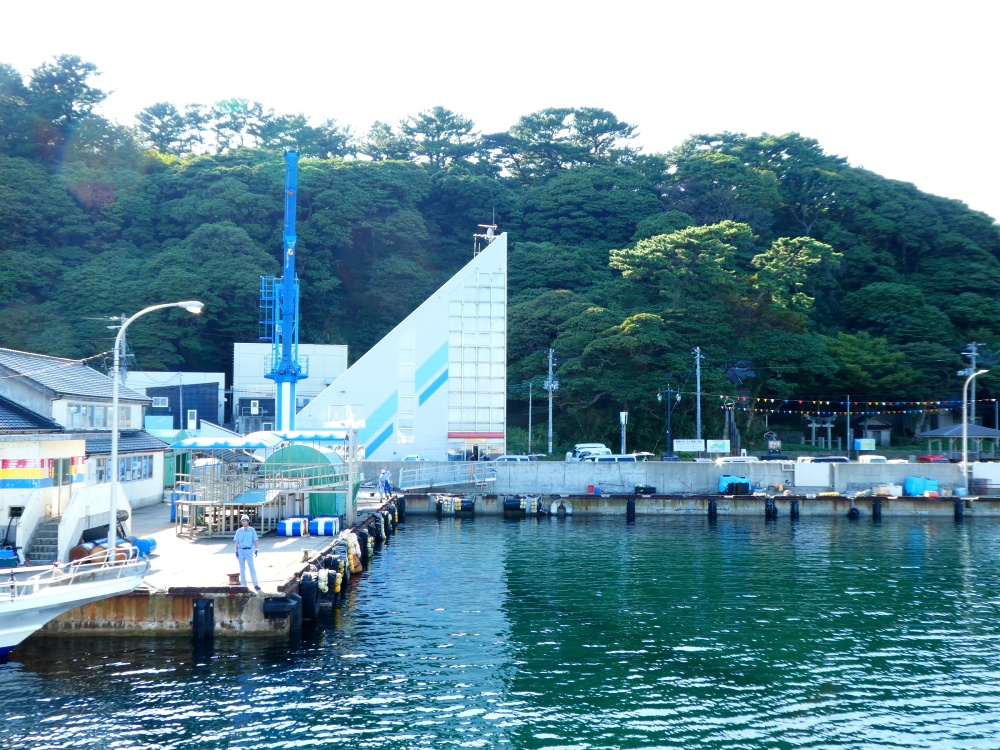
Finally, we will land at Tobishima.
Each ryokan and guest house will have staff waiting at the landing area and will carry your luggage to your inn beforehand.
Then we walk to it.
Don’t forget the “rental bicycle” service here.
The number is limited so I decided to rent one on the way to the inn.
If you have a bicycle, you can comfortably explore the island, so I highly recommend it.
And it’s free.

4. Shima Kahe, a place to relax at on the island
After checking in at the ryokan, the first thing to do is have lunch.
I decided to go to Shima Kahe, a place that intrigued me.

The islanders pronounce “café” as “kahe,” so they named it “Shima Kahe” in the hope that it would become a familiar place for the island.
Shima Kahe is a 1-minute walk from the dock and is easily accessible from anywhere.
By the way, there are two other ramen restaurants called Nishimura Shokudo and Honma Shokudo in addition to Shima Kahe for lunch.
*Honma Shokudo is temporarily closed.
Since there are no shops, you will either have to buy some food at Sakata beforehand or eat here.

I had a daily lunch set.
A set of prawn and squid curry with salad, croquette and dessert.
The curry was mellow, and the crispy croquette was a nice touch, overall it was delicious.
There are beer, sake, shochu, and wine as well as menus and alcoholic beverages made with ingredients that can be obtained on the island.
It is a shop loved not only by tourists but also by the people of the island.
The icecream is especially interesting!
・Grilled fly fish extract ice cream
・Wakame seaweed & yogurt ice cream
・Godo-imo potato ice cream
・Nori seaweed & green tea ice cream
・Fish soy sauce ice cream
It’s intriguing what it tastes like.
I have to try it next year!
5. Departure for adventure [first day]
・Geo exploration course
There are four types of recommended walking courses, each of which can be enjoyed in about 150 minutes.
・Geo exploration course to experience the work of the earth
・One of Japan’s Best 100 Beaches: A walking course to enjoy the flowers and nature of Arasaki
・West coast and fishing village landscape course (cycling course) seen from the area with the beach bell
・Tree & bird watching nature experience course in the giant tree forest
This time, I decided to take the “Geo experience course to experience the work of the earth”.
Let’s start exploring!
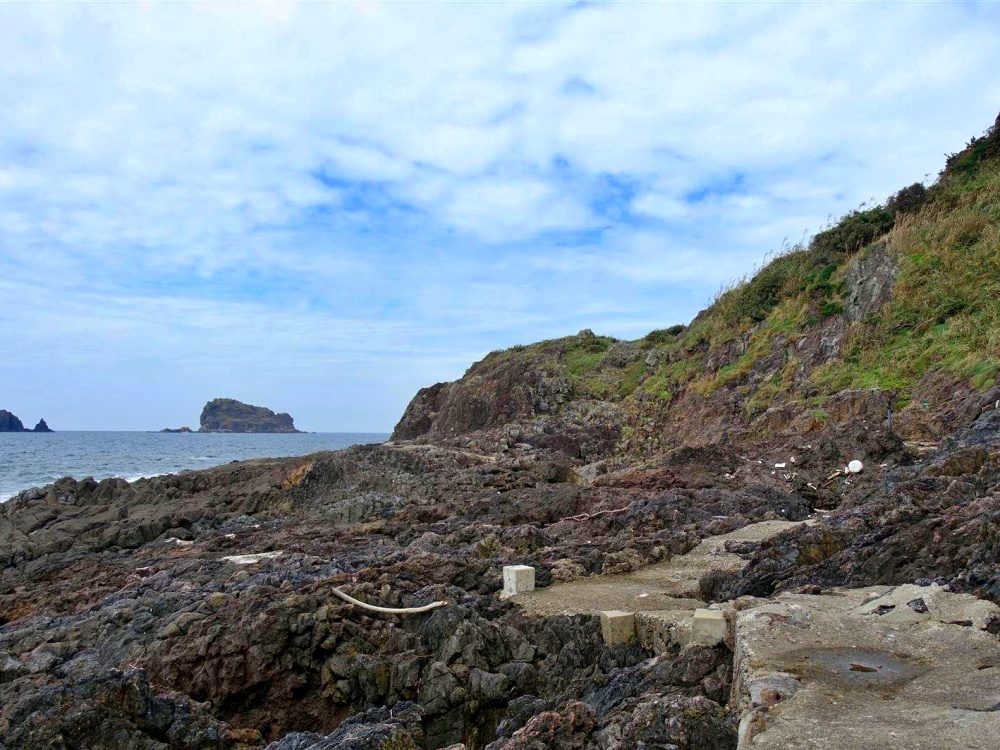
When you start walking you will see the rough landscape of solidified lava.
However, the road is paved with concrete, so it’s easy to walk at your own pace.
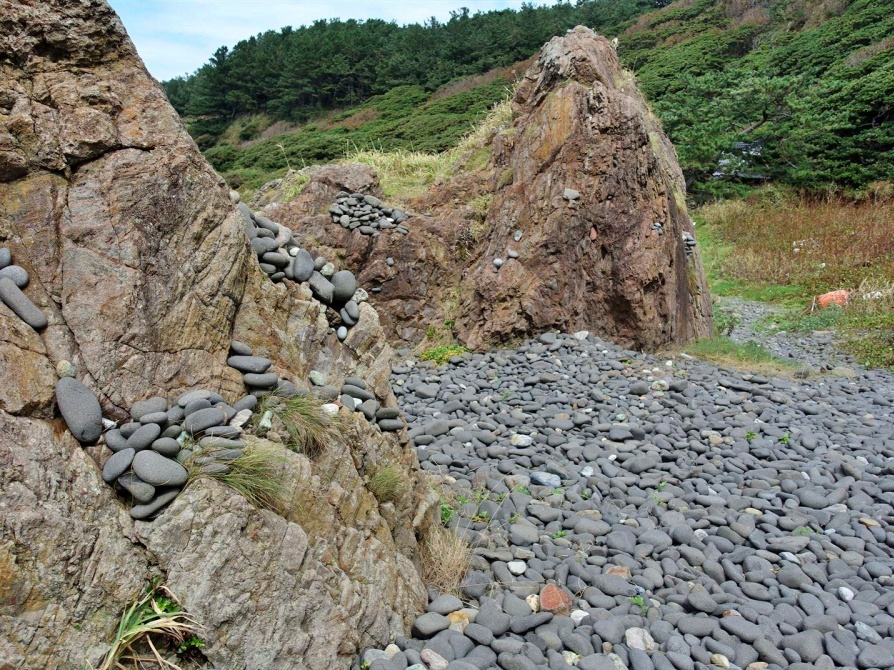
On the way I arrived at the beach named “Sai-no-kawara” where round stones are lined up with rumblings.
It is believed that this has long been a spiritual place close to the other world.
I walked about 20 minutes but when I looked at the map, I only had progressed a little!
I also wanted to enjoy fishing after this, so I decided to turn back.
There are still many things to discover, but I’ve decided to save the fun for next year.
By car you would be able to go around the island in no time, but on foot you cannot cover the whole island in just one trip.
So you may want to visit it many times.
6. Fun at the inn
I enjoyed the first day of island life then returned to the inn.
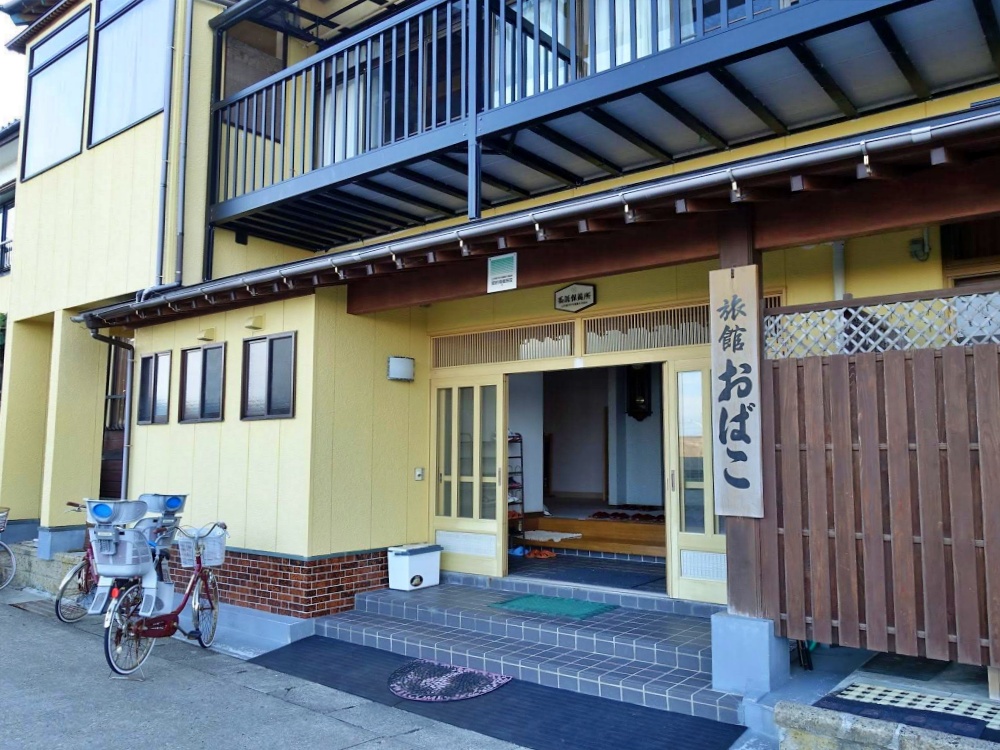
This time, I stayed at the Ryokan Obako. This is the largest ryokan in Tobishima, and its yellow exterior is a landmark.

Speaking of fun at an inn, it is the dinner.
For those who like fish, it is exciting!
I enjoyed seafood such as turban shells, abalone, crabs, sashimi and boiled fish, and it was a great dinner.
7. Departure for adventure [Day 2]
・Take a bicycle to the Hoki area
On the second day, I will take a bike to the Hoki area.
The Hoki district is a fishing village located on the north side of the island, and it has a slightly different atmosphere from the Katsuura and Nakamura districts, which are lined with docks and inns.
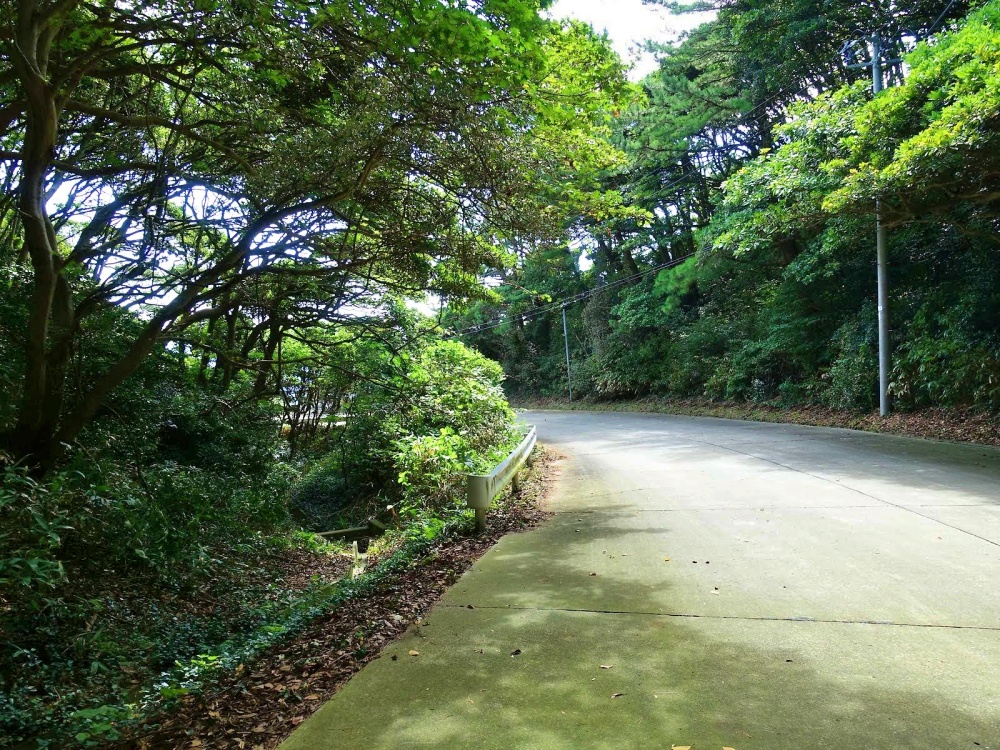
Follow the road along the coast and climb the mountain path beyond the school.
A steep slope continued so stopped and I pulled my bicycle to climb.
When you get off the steep slope you can see the village of Hoki.
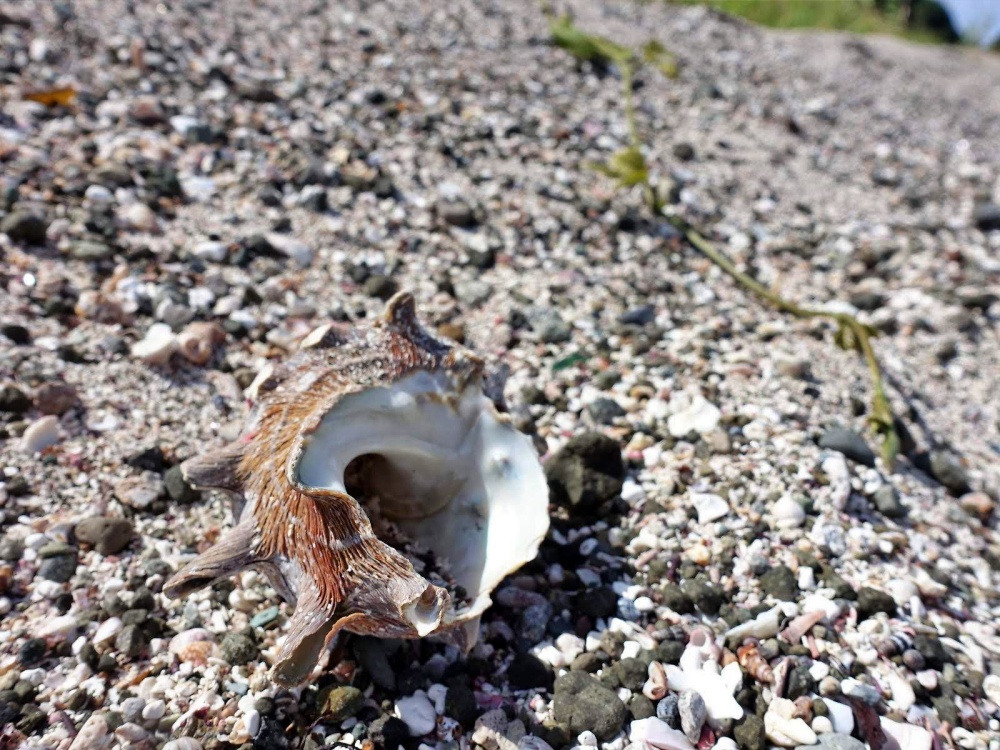
In the Hoki district, the coast is made of fine shells.
When I scooped it with my hands, I found shells of various colors and shapes, and I forgot time just watching at the beach for the first time.
The round stones on the coast of Sai, which I saw the day before, and this shell coast and the scenery that can’t be seen on the mainland were inspiring.
8. The main purpose of the trip: fishing!
Tobishima is visited by many anglers during this season (September) in order to catch bigfin reef squids.
In addition, there are small islands around Tobishima, such as Mizumijima isle, the Karasuma archipelago and Futamatajima isle. If you can ask the people at the inn they can get you to them by boat.
The guests at the same inn as I seemed to have caught a lot of fishes and they even had squids in their cooler boxes.
I’m envious.
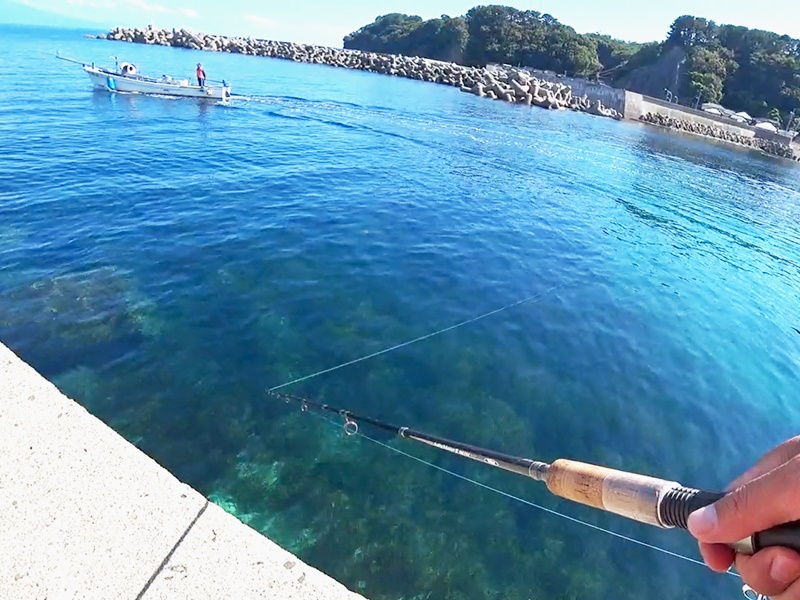
There are several fishing points, but I recommend the Umizuri Park for children and beginners.
The Umizuri Park is located at the southern end of Katsuura Port and has a pier for fishing, so you can enjoy fishing safely.
At the breakwaters and rocky areas, it is also possible to catch mackerels, fat greenlings, and flounders.
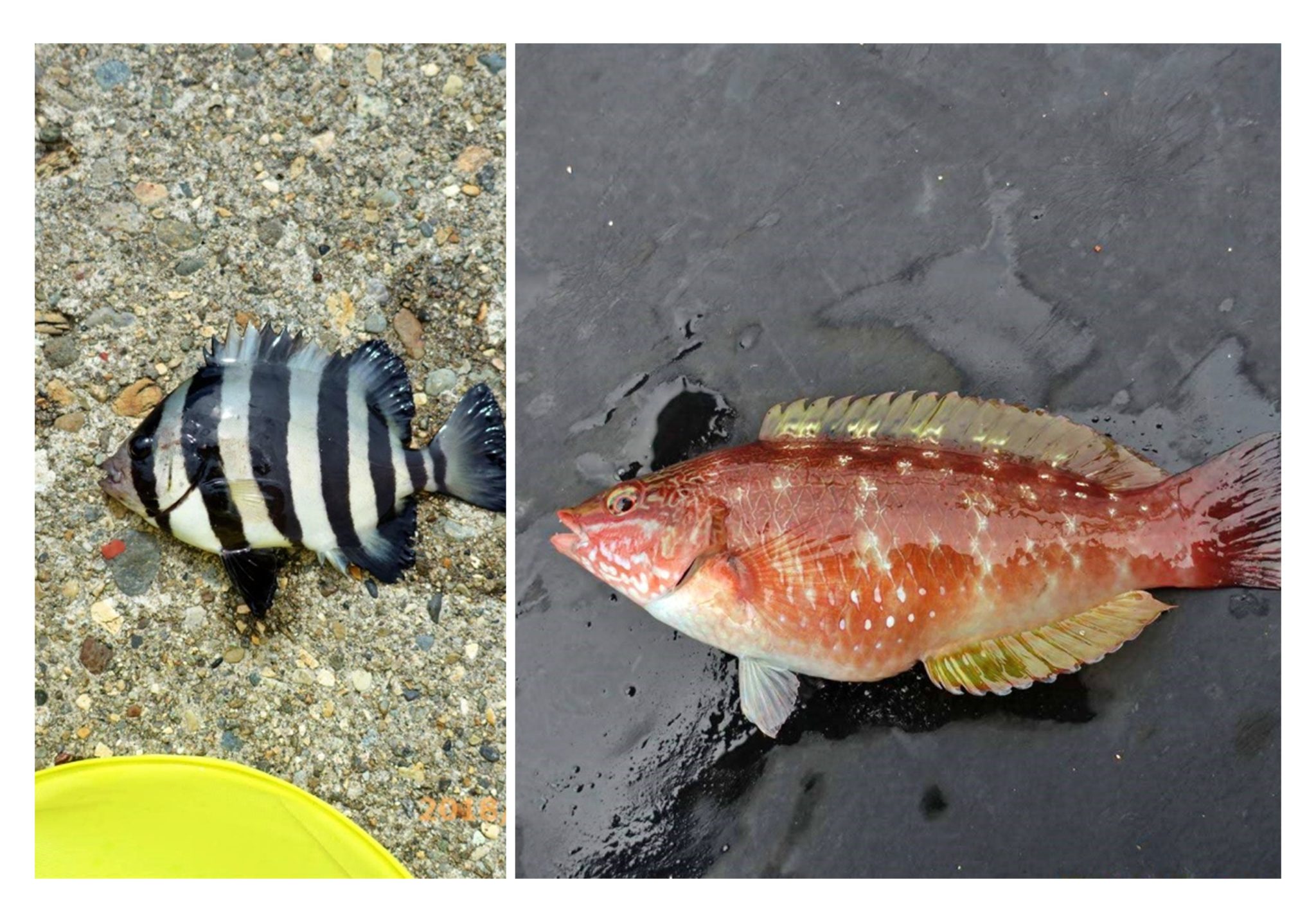
I enjoyed fishing from the Umizuri Park on the first day and from the breakwater on the second day.
I had a good time fishing black scrapers, striped beakfish (pictured left) and pseudolabrus (pictured right).
The pseudolabrus has flashy colors but it is actually a delicious fish.
But this time I did not take it home and released it.
Depending on the inn or the guesthouse, they may serve for dinner you the fishes you caught, so it might be a good idea to consult with them.

I visited this time in September, but during the swimming season from mid-July to mid-August, you can enjoy swimming, surfing and snorkeling.
The beach is a bay, so the waves are calm and even small children can enjoy it with peace of mind.
The beautiful transparent sea is also popular as a diving spot.
9. Tempo Soba ~ Why is it grown on Tobishima?
There are dams and fields at the summits of the island in the north and south where rice and vegetables are grown.
And there is buckwheat unique to Tobishima.
Do you know Tempo soba?
Soba seeds found in an old residence in Okuma Town, Fukushima Prefecture.
Although they tried to germinate, the result was that they lacked the ability to grow at universities and research institutions.
The buckwheat fruits arrived at Yamagata’s president of Suzuki Seifun, the late Mr. Suzuki.
After cultivating with the traditional method, observing the old tradition that “you don’t need water when sowing buckwheat,” germination was confirmed on August 2, 2001.
And, over time, Tempo soba was revived.

So why is it grown on Tobishima?
The reason is that when buckwheat is cultivated on the mainland, it crosses with other buckwheat pollen at the time of pollination and therefore cannot keep the original seed.
Pollination is done via bees and such.
In a normal field, bees fly over a wide area, so they cross without knowing.
But since Tobishima is 39 km away from the mainland, bees can’t reach it, and therefore the original species can be protected.
A little funny episode unique to the island.
Tempo soba can be found in soba shops in Yamagata Cityfor a limited time from early June.
If you like it, please try it.
[Shops where you can eat Tempo soba]
| Soba restaurant Soemon | 1 Saotome, Yamagata City | ☎ 023-633-0055 |
| Iuemon | 1-16-41 Shimakita, Yamagata City | ☎ 023-684-5716 |
| Kifune | 68 Tenjin-cho, Yamagata City | ☎ 023-684-8446 |
| Sanbyakubo | 453-2 Tsuchizaka, Yamagata City | ☎ 023-633-3092 |
| Shojiya | 14-28 Saiwai-cho, Yamagata City | ☎ 023-622-1380 |
| Mitsuya | 1-1-75, Uwamachi, Yamagata City | ☎ 023-644-4973 |
| Minatoya | 2-1-30 Wago-cho, Yamagata City | ☎ 023-622-8921 |
| Soba noodle shop Mineta | 2-1-40 Shironishi-machi, Yamagata City | ☎ 023-643-0252 |
| Daini-koen park Yamacho | 4-3-8 Tokamachi, Yamagata City | ☎ 023-622-2963 |
| Kikutaro Shintomi | 1-8-20 Johoku, Yonezawa City | ☎ 0238-23-0666 |
| Maccha-an | 2-4-12 Kawasaki, Kaminoyama City | ☎ 023-672-0399 |
| Mitoya | 4494-5 Yamadera, Yamagata City | ☎ 023-695-2506 |
| Nakaya | 1-9-21 Wakamiya, Yamagata City | ☎ 023-644-1164 |
10. Sakata seafood market
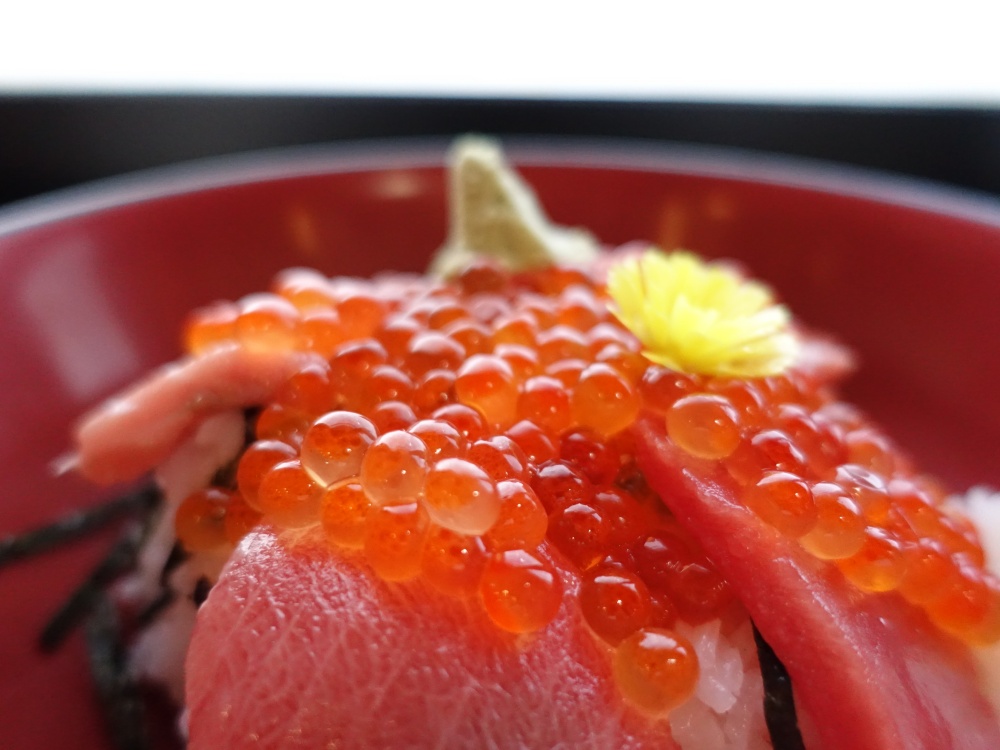
Well, two days have passed and I’m back in Sakata.
The Sakata Seafood Market, located next to the departure and arrival area, is lined with seafood restaurants, souvenir shops, and fresh fish shops.
I also recommend buying fresh seafood for souvenirs when going home.
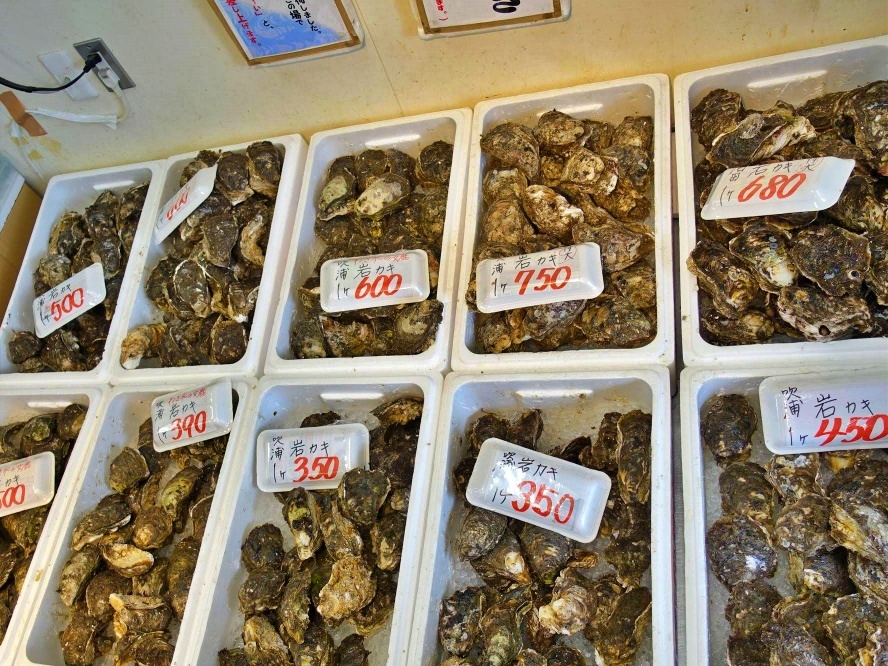
From June to mid-August, the rock oysters are in season.
Is it okay to eat oysters in the summer? As you can see, summer is the peak season!
Underground water from Mt. Chokai flows into the sea to make the rock oysters rich in minerals and of excellent taste.
The oysters eaten in winter are mostly cultured, while rock oysters are natural and rarely appear on the market.
If you come to Sakata, please try it.
Detailed information

-
Sakata Seafood Market
2-5-10 Funabacho, Sakata City
0234-23-5522 (1F Sugawara Gyosen) 0234-23-5522 (1F Sugawara Gyosen)

![[Feature] Pino Collina Matsugaoka! Winery & Restaurant in Shonai](https://www.visityamagata.jp/wp/wp-content/uploads/2024/06/pinocollina.jpg)
![[Feature] Sahato Benihana! Enjoy the starry sky at the prefecture’s largest planetarium](https://www.visityamagata.jp/wp/wp-content/uploads/2024/07/sahato.jpg)
![[Summary] Safflower Festival 2024! Discover Yamagata’s prefectural flower](https://www.visityamagata.jp/wp/wp-content/uploads/2021/06/紅花①.jpg)
![[Feature] Miraini! Sakata Activity Hub](https://www.visityamagata.jp/wp/wp-content/uploads/2024/02/compile-image_1707742235039.png)
![[Feature] Yukotto! Refreshing time in hot springs](https://www.visityamagata.jp/wp/wp-content/uploads/2024/03/yukotto.jpg)